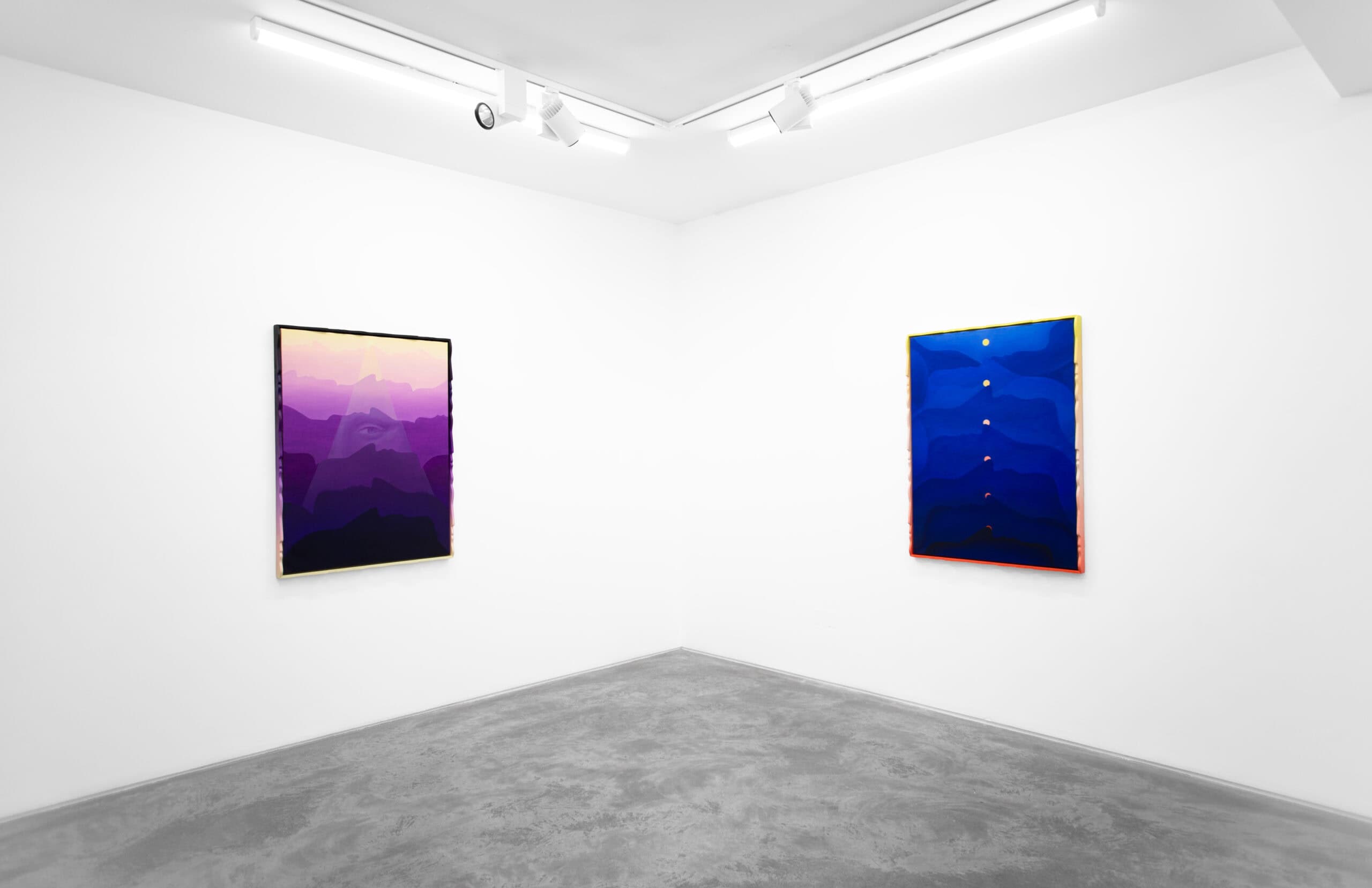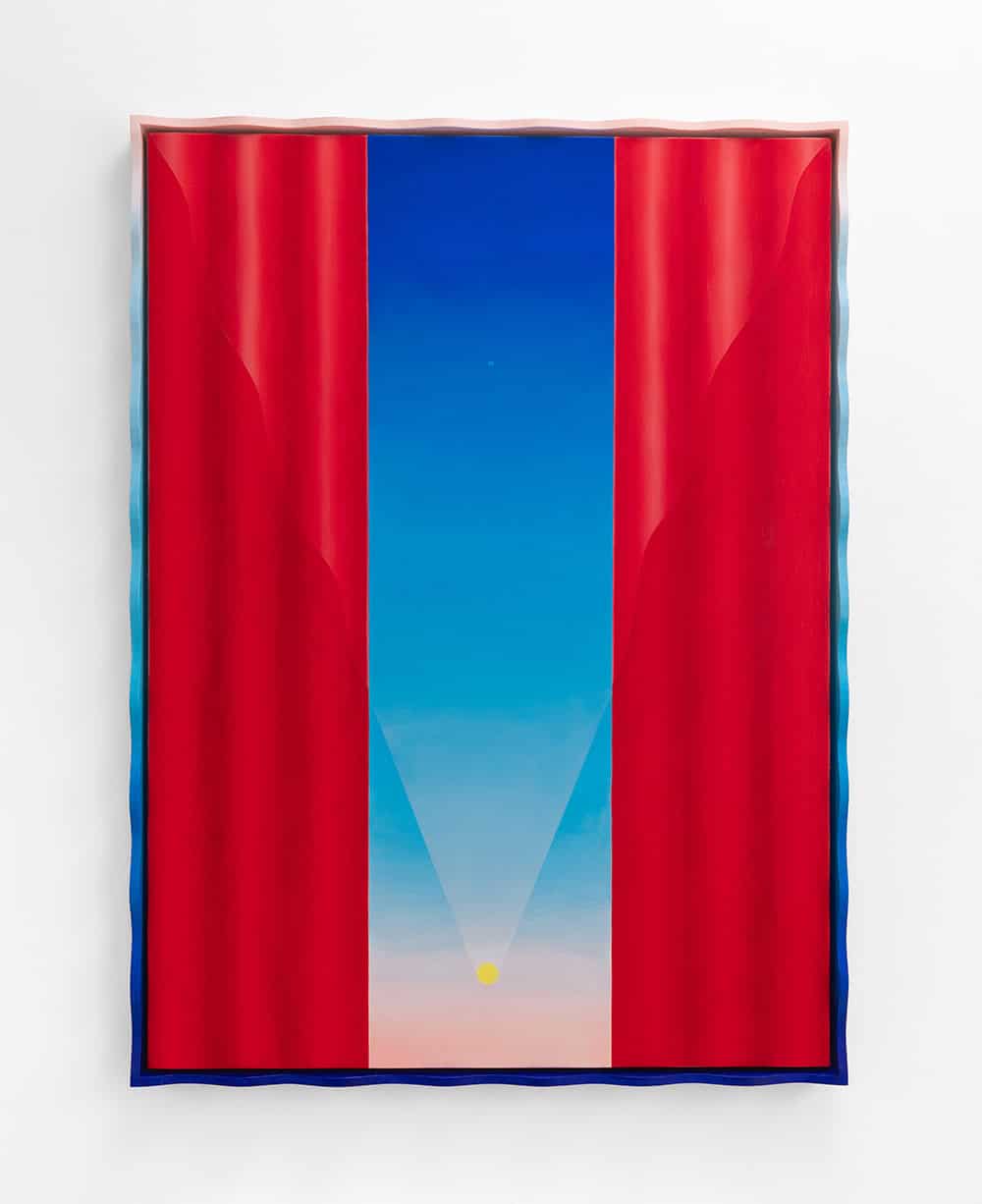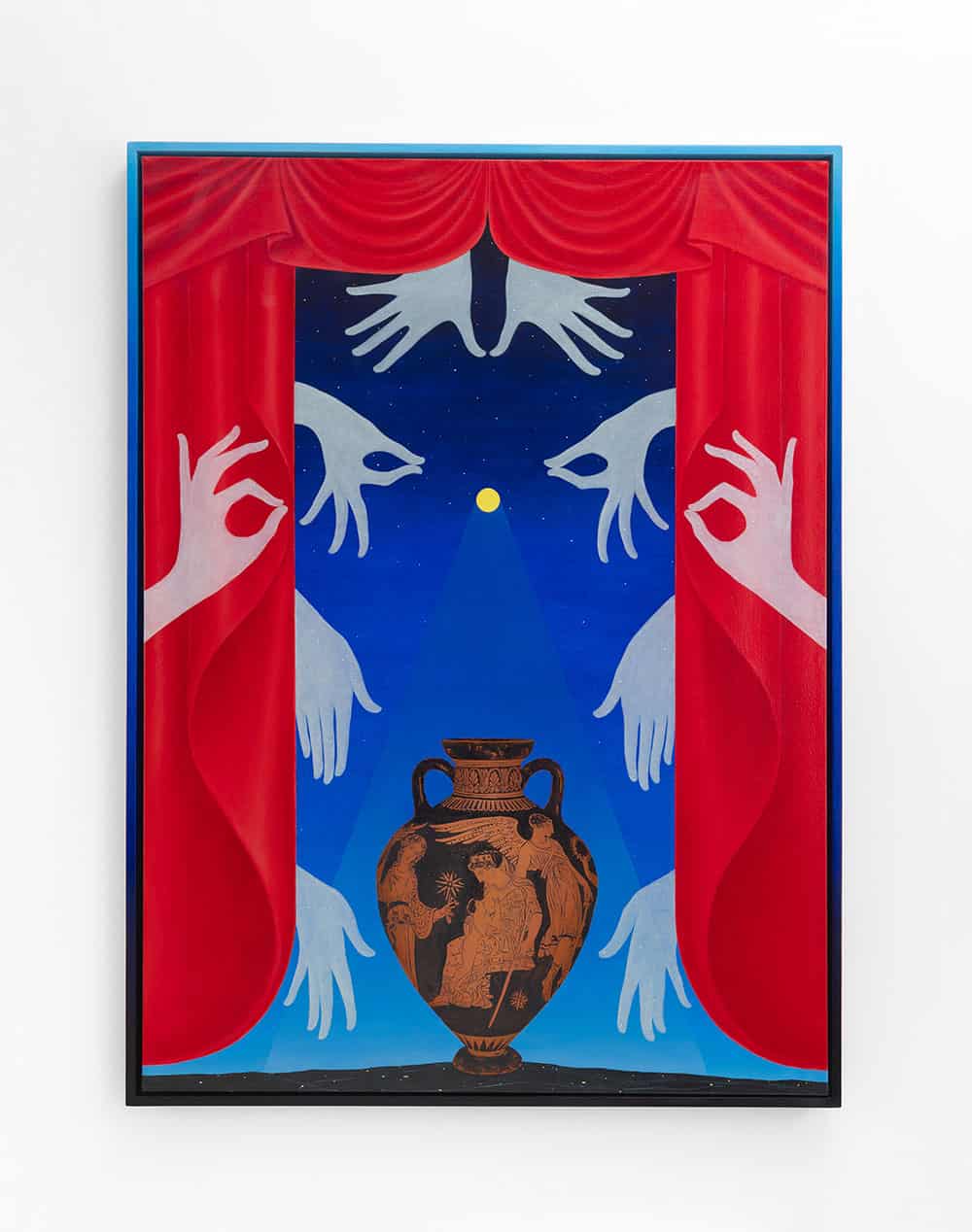[My practice] opposes the idea of “progress” in art history as a straight arrow, but rather proposes a winding timeline toward a common visual language that overlaps, loops, omits, dematerializes, and rematerializes.
Emily Weiner

Installation of Emily Weiner's "Providence (Annuit Coepta)" (2024, left) and "Meridian" (2024, right)
A teacher, a curator, a mother, and an artist, Emily Weiner wears many costumes throughout each day, performing each one as a new version of herself. While each form presents as a new person, each role is simultaneously played by Weiner, much as how symbols across art history can be at once localised and universal in meanings. Drawn to this idea of plural identities that exist under otherwise disparate façades, Weiner creates paintings that reach into the subconscious for mutual recognition and cultures, through identifiable art historical and craft symbols.
Exploring the Jungian theory of symbols, in which a collective subconscious is spun amongst human kind, Weiner explores how art historical iconography plays a part in our shared memory. In particular she searches for that thin line between universal representation and universal recognition. While symbols within art history can be hyper local or evolve in meaning over time, Weiner’s Jungian paintings seek a system of symbols which tap into a viewer’s shared intuition, recall, space and time, and subconscious memories and dreams.
For example, while a red curtain, an image prevalent in many of Weiner’s works, once used to symbolise wealth, opulence, and trade networks of wealthy nobility in paintings such as Las Meninas (1599) by the Spanish Baroque painter Diego Velázquez, these meanings have shifted in modern day life. Contemporarily, these thick, draping red curtains are scarcely seen outside of theatres and cinemas—do we still liken them to this historic lifestyle, or have they become the mark of a performance instead? Where will these textiles exist in 20 years, and how will a viewer of that time connect to their imagery?

Emily Weiner, Freefall, 2024. Emily Weiner, Freefall, 2024.
Playing with this idea of shifting symbols, Weiner gathers those from folklore, performance, and craft as a way of connecting people across a blurred collective memory or imagination, as opposed to religiously rife art historic symbols with a presupposed ‘correct’ or ‘incorrect’ meaning. These humanistic references instead build upon humanity’s shared stories, such as when the curtains are raised and the play on Weiner’s canvas begins.
The images of performance and craft within Weiner’s paintings are intentional. Playing into her experiences wearing many masks across her life, she creates a commentary on the numerous performances one must play in day-to-day life. This shared experience has found its home in clown, jester, and theatre imagery: soft fabrics from a Pierrot costume, the f-holes of a violin, and white gloved hands peeking out of a red curtain. This theme of performance even finds itself in how Weiner reimagines the cosmos, with the radial light cast from the sun and moon working as if a light on stage, illuminating vases, ripples, or eyes.
While the subjects of each stage vary, Weiner is deliberate in the themes of objects she selects across her body of work. In particular, she shines a light upon under-represented female craft labor, with pottery, textiles, and performance. As part of elevating and appreciating these artforms in the same manner as traditional ‘fine art’, she also crafts each frame for her paintings. She slowly works with ceramic or wood to create a bracing which compliments each piece, much like the practice of Piet Mondrian, a Dutch pioneer of abstract painting, combining the painting and craft into a singular artwork that extends beyond the edge of the canvas. Working with such fragile materials for the frame, she subverts both the notion of frames as purely functional and the hierarchy within artforms by recognising the artistry behind the selection and crafting of a frame.
In linking these bespoke frames more intimately with her painting, she inverts the colorschemes of her gradient backdrops or replicates the symbols within her painting along the frame itself—at times rippling the canvas and frame together to form the pleats of a curtain’s drapes. Breaking past the expectations of two-dimensional painting, her paintings subvert realistic and traditional perspective in order to reimagine art historical motifs. Her gothic archways draw the eyes outside, as opposed to an interior space; the sun and moon become the drops that spark a cascade of ripples as opposed to floating in the sky; and the surreal combinations of imagery and colour form dreamlike spaces that defy a single explanation.
Each of the symbols into which Weiner leans takes on numerous memories as they connect with a viewer. Interested in how representational imagery can translate between individuals, she experiments with Surrealist combinations of otherwise impossible pairings of colours and juxtapositions. Each symbol becomes a vessel for metaphors within the collective memory that has never stopped developing across history, layering together to create stories that need to be slowly unpicked
(By Teddy Woods)
